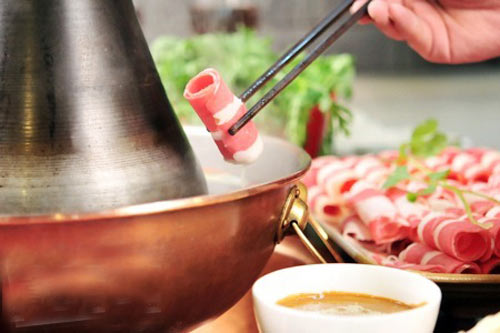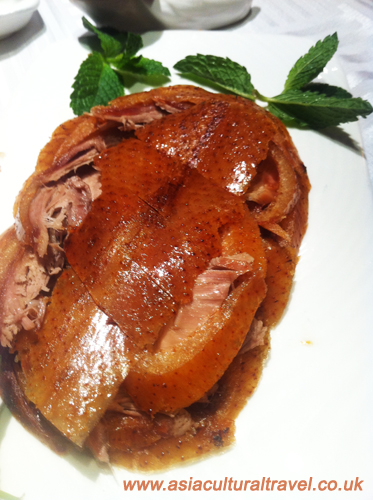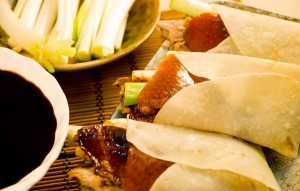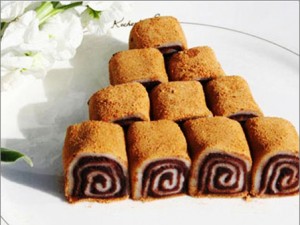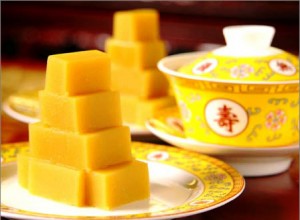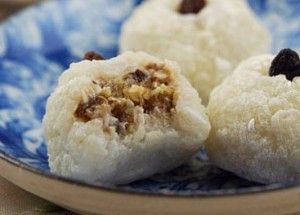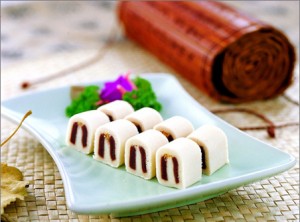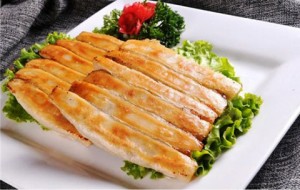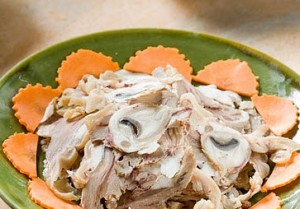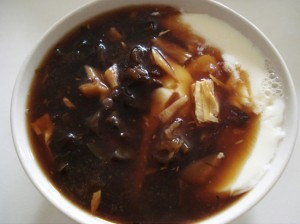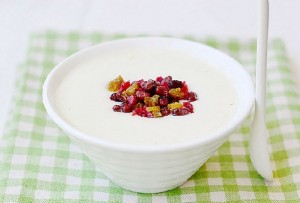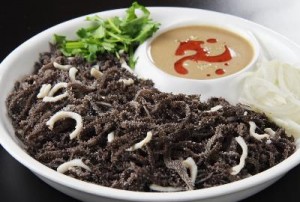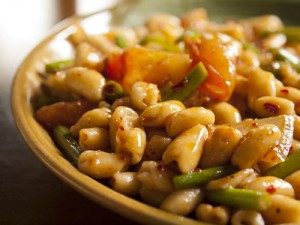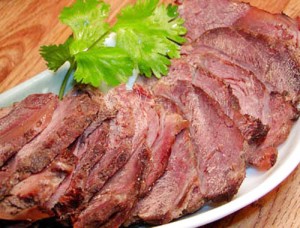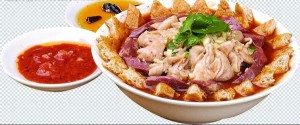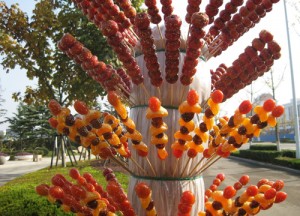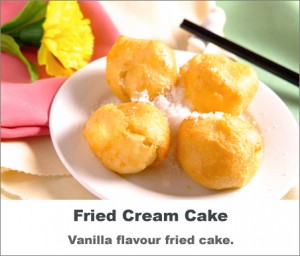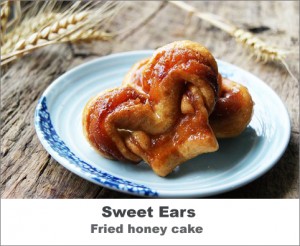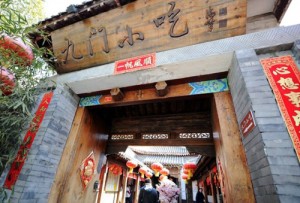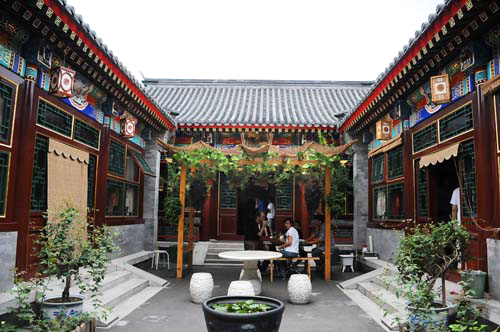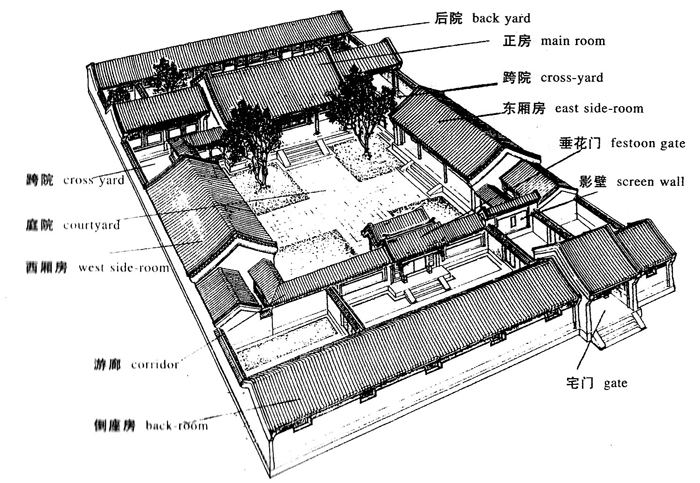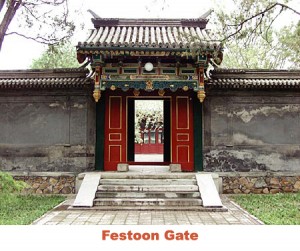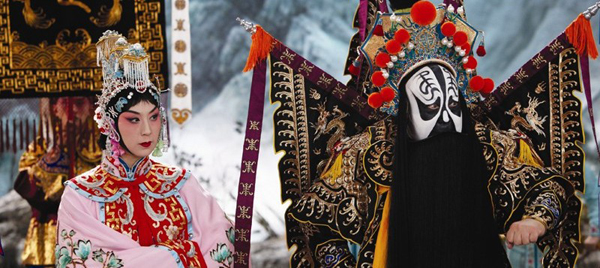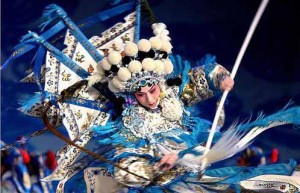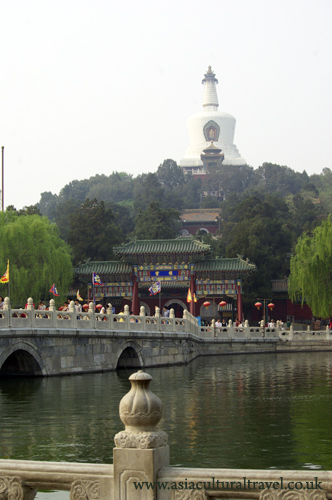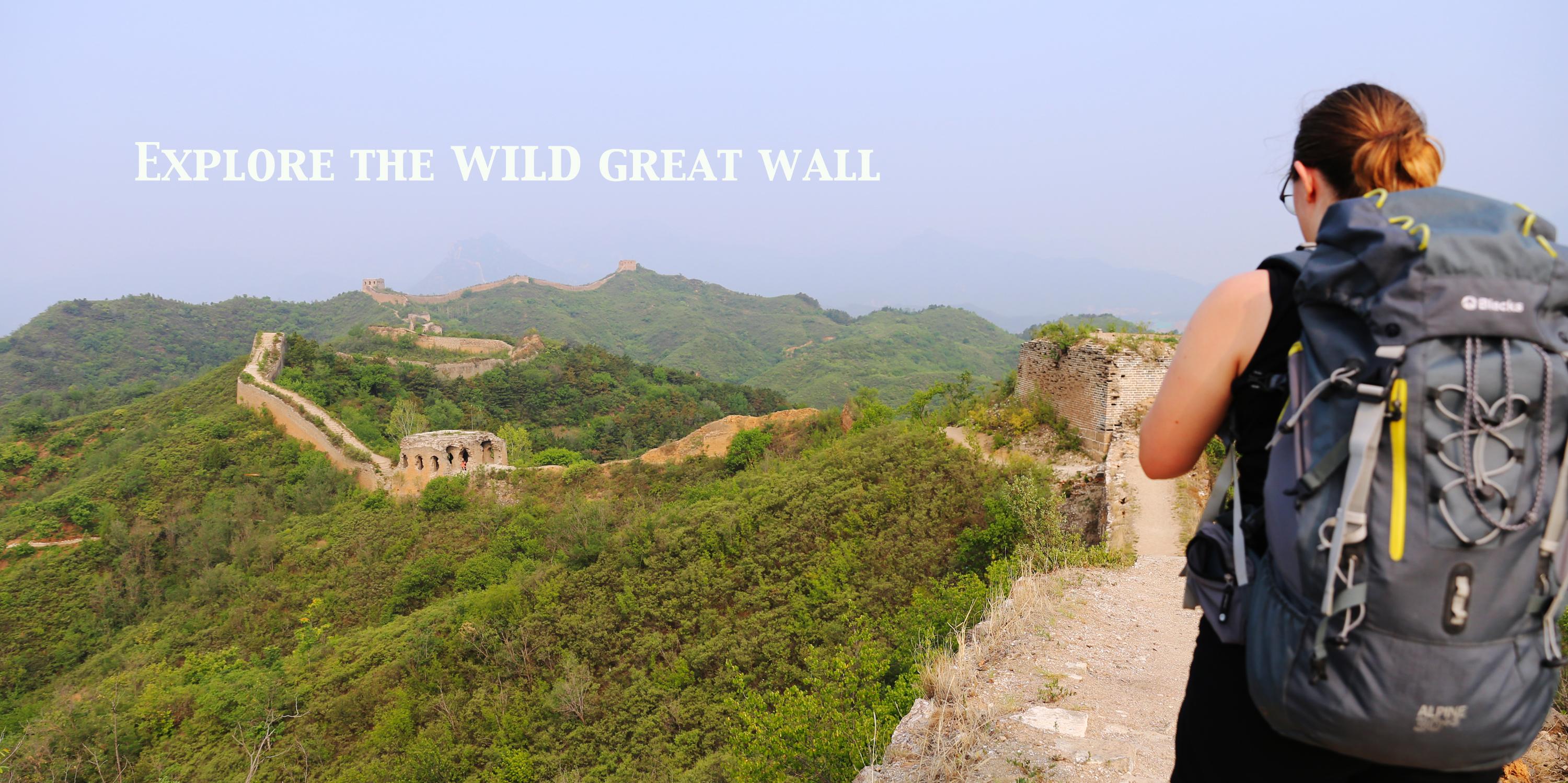
Beijing Instant-boiled mutton or Beijing Mutton Hotpot
The pot is made from copper and has a coal-burning stove incorporated into its base, which is used to heat the pot and thus the soup inside of the pot. The soup in which the mutton is boiled is considered very good for your general health because of the herbs that are used in it.
Mutton and beef slices are the most commonly chosen types of meat for the hotpot. Fresh mutton has a richer flavour and is more expensive than frozen mutton. Besides mutton and beef, cow stomach, fish, tofu and vegetables are also popular choices for hotpot ingredients. Noodles are generally left to be boiled towards the end of the meal, but some people prefer to use rice cakes instead.
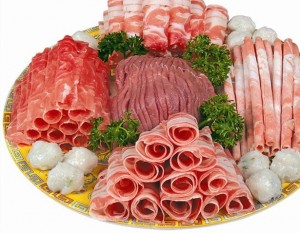 The sauce that you dip the meat into before eating it also plays an important role in the flavour of the dish. The sauce is usually a mixture of sesame seed oil, chilli oil, flowers from the Chinese chive and minced scallion.
The sauce that you dip the meat into before eating it also plays an important role in the flavour of the dish. The sauce is usually a mixture of sesame seed oil, chilli oil, flowers from the Chinese chive and minced scallion.
Beijing hotpot is different from Sichuan hotpot, which is the most famous style of hotpot in China. Sichuan hotpot usually uses a spicy soup as its base and is cooked using a small electric cooker. The traditional Beijing hotpot, on the other hand, uses a milder soup as its base and is cooked using a coal burning stove.
Join our tour to taste Beijing Mutton Hotpot: Explore Chinese Culture through the Ages
The Summer Palace
The Chinese name for the Summer Palace is “Yi He Yuan”, which means “the garden of good health and harmony” in Chinese. It covers a total area of 290 hectares, 193.4 feet of which is taken up by Longevity Hill and Kunming Lake.
The Summer Palace has survived for over 800 years. In 1153, the Jin dynasty chose Beijing (named Yanjing) as its capital, and an imperial palace, named “the Golden Hill Travelling Palace”, was built on the current site of the Summer Palace. In 1750, Emperor Qianlong of the Qing dynasty built the Garden of Clear Ripples using 4.48 million taels of silver. It took an astounding 15 years for the construction of this garden to be completed. In 1860, the Anglo-French Allied Forces invaded Beijing and burned down the palace. In 1888, Cixi, the Queen Regent, spent the 30 million taels (937,500 kilogrammes of silver) that were meant to be used developing the national navy on restoring the garden.
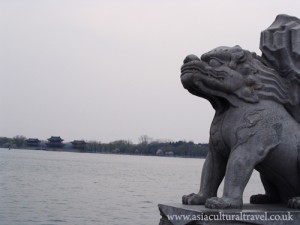 It was Cixi who renamed this palace the Summer Palace. Unfortunately, it was plundered again in 1900 by invading troops from the Eight-Power Allied Forces (Britain, the United States, Germany, France, Tsarist Russia, Japan, Italy and Austria). The huge temple and the halls on Longevity Hill were all destroyed. The only buildings that survived were the non-wooden structures, such as the Bronze Pavilion in Baoyunge, the Marble Boat and the Sea of Wisdom Temple. But, in 1903, Cixi once again sunk plenty of money into the reconstruction of the palace. Now the Summer Palace is more or less the same as it was when it was rebuilt in 1903.
It was Cixi who renamed this palace the Summer Palace. Unfortunately, it was plundered again in 1900 by invading troops from the Eight-Power Allied Forces (Britain, the United States, Germany, France, Tsarist Russia, Japan, Italy and Austria). The huge temple and the halls on Longevity Hill were all destroyed. The only buildings that survived were the non-wooden structures, such as the Bronze Pavilion in Baoyunge, the Marble Boat and the Sea of Wisdom Temple. But, in 1903, Cixi once again sunk plenty of money into the reconstruction of the palace. Now the Summer Palace is more or less the same as it was when it was rebuilt in 1903.
The Hall of Benevolence and Longevity
The Queen Regent Cixi and her nephew, the Emperor Guangxu, dealt with state affairs and met officials in this hall. The hall was first built in 1750 and was named the Hall of Industrious Government. Although the sentiment does not translate well, the term “Industrious Government” in Chinese means “working hard on issues and concerns related to the government”. Of course this hall was so-named for the emperor, implying that he worked assiduously on government issues.
There was a throne in the middle of the hall which followed the nine-dragon design. There were also two big fans made of peacock feathers on either side of the throne.
The inscription on the tablet in the altar states that if the emperor employs great benevolence when managing the government then he will live a long life.
There is a pair of wooden lions in the hall that were carved from the roots of two birch trees. There is also a wooden elephant there, which was considered a symbol of universal peace. Around the throne are placed tripods and lamps in the shapes of phoenixes and cranes. Candles, sandalwood and incense were burned inside of these lamps to heighten the mystical atmosphere of the hall.
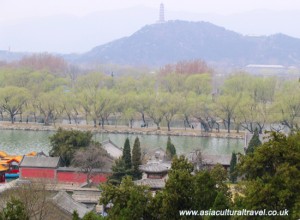 Other famous halls or rooms in the Summer Palace include:
Other famous halls or rooms in the Summer Palace include:
The Hall of Happiness and Longevity
Youngshuo Room
The Hall of Dispelling Clouds
The Hall of Jade Ripples
The Tower of Buddhist Incense
According to the original plan, a nine–storey tower was built in the Garden of Clear Ripples by Emperor Qianlong of the Qing Dynasty. The tower was designed after the famous tower in Hangzhou – Liuhe tower. But not long after finishing the eighth storey of the tower, some of the architects argued that this tall, thin building did not suit the surrounding hills and the lake. They thought a more imposing structure would be more suitable. Emperor Qianlong accepted their argument and so the Tower of Buddhist Incense was built instead.
When you come to the Summer Palace nowadays, you will find a three-storey tower, which is 41 metres high. This is the Tower of Buddhist Incense. The Queen Regent Cixi used to worship the Gods here. It was rebuilt twice: first in 1860 after it was destroyed by the Anglo-French Allied Force and then again in 1900 after it was destroyed by the Eight-Power Allied Force.
The 17-Arch Bridge
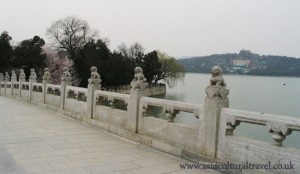 This bridge is on Kunming Lake and provides passage to Penglai Island (South Lake Island), which is where you will find the Temple of the Dragon King.
This bridge is on Kunming Lake and provides passage to Penglai Island (South Lake Island), which is where you will find the Temple of the Dragon King.
The bridge is 150 meters long. From a distance, it looks like a rainbow hanging across the river. There are 544 carved stone lions on the bridge, all of them in various different poses. It’s a lot of fun just looking at the diversity of appearance among the lions on the bridge.
Other famous places in the Summer Palace include:
The Long Corridor
The Marble Boat
Wenchang Courtyard
The Gilt Bronze Ox
Yeli Chucai Memorial Temple
The Sea of Wisdom Temple
What’s more, if you visit the Summer Palace during the spring, you will be treated to what is considered its most beautiful view. There are hundreds of peach trees in the park, all along the edge of Kunming Lake. In the spring, when the peach trees blossom, the view from across the lake is breathtakingly beautiful.
Beijing Roast Duck
Beijing roast duck is undoubtedly the most famous dish in Beijing and also the most popular in local restaurants, for both tourists and locals. Believe it or not, it actually originated from Shandong Province. A restaurant named Bianyifang created its own technique of closed oven roasting in 1416, then, in 1864, another restaurant, named Quanjude, improved on this technique and created their own technique of hung oven roasting, which is now the most popular method for roasting duck in Beijing today. Jujube wood, peach wood and pear wood are generally chosen as the fuel for the oven because they give off plenty of heat with little smoke and impart a fruity fragrance. However, if you want to try duck that has been cooked using the closed oven roasting technique, you can still go to Bianyifang, which still maintains its original technique of cooking duck.
The best Beijing roast duck has crispy golden skin and meat that just melts in your mouth. To truly experience its mouth-watering flavour, first dip a slice of duck meat into some sweet bean sauce or hoisin sauce, then wrap the slice in a soft pancake along with some slices of vegetables, such as spring onion and cucumber.
Join our tour to taste Beijing Roast Duck: Explore Chinese Culture through the Ages
Beijing Traditional Snacks
Generally speaking, there are 11 well-known brands of traditional snack in Beijing and they have all been famous for nearly 600 years, usually since the first generation of the family that made them. Each of these brands of snack belongs to a family and has been run by said family across 3 to 6 generations.
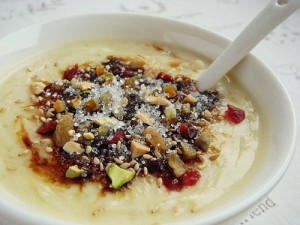 Fragrant Fried-Flour Tea (Cha Tang)
Fragrant Fried-Flour Tea (Cha Tang)
Cha Tang is essentially made by adding hot water to fried flour. The fried flour is usually mixed with chestnut powder or lotus root powder, and instead of using sugar you can substitute it with osmanthus sugar.
Famous brand of fried-flour tea: Chatang Li
Rolling Donkeys (Lü Da Gun)
Rolling Donkeys are glutinous rice rolls that are mixed with sweet red beans and skinned using soybean flour.
Golden Pea Cake (Wan Dou Huang)
This special type of cake is made from white peas, which are mixed with sugar and osmanthus. It is smooth, cool and has a delightfully fresh taste.
Stuffed Sweet Rice Cake (Ai Wo Wo)
These cakes are made with glutinous rice and can contain a variety of different fillings, such as sesame seeds, peach kernels, and shelled melon seeds.
Bean Rolls (Yun Dou Juan)
These are made using bean flour and are filled with sweet red bean paste.
Famous brand that produces rolling donkeys, yellow pea cake, steamed rice cakes with sweet mixed-fillings and bean rolls: Niangao Qian
Fried Pouch Roll (Dalian Huo Shao)
This is a pouch-shaped roll with crispy skin and it is usually filled with traditional Chinese dumpling fillings such as leek and pork.
Famous brand of fried-pouch roll: Dalian Huoshao
Boiled Mutton (Bai Shui Yang Tou)
To make this snack, the sheep’s head is boiled in water only, in order to maintain the mutton’s natural flavour. Salt is sprinkled on the mutton before it is served.
Famous brand of boiled mutton: Yangtou Ma
Savoury Tofu Pudding (Dou Fu Nao)
It is made using very soft tofu and served with a paste that is usually made from a mixture of a plant called the Long Yellow Day Lily (Hemerocallis citrina), a fungus called the Wood Ear mushroom (Auricularia auricula-judae), other types of mushroom and eggs.
Famous brand of savory tofu pudding: Doufunao Bai
Yogurt (Nai Lao)
This yogurt recipe is special because it follows the Mongolian way of making yogurt, and usually has raisins and melon seeds added to it.
Famous brand of yogurt: Nailao Wei
Boiled Cow Stomach
In this dish, the slices of stomach taste tender and are usually served with a bowl of sesame seed paste.
Famous brand of boiled cow stomach: Baodu Feng
Fried Flour Lumps with Vegetables (Chao Ge Da)
After being boiled in water, the lumps of flour are fried with beef, mutton pieces and vegetable slices.
Famous brand of fried flour lumps with vegetables: En Yuan Ju
Stewed Mutton and Beef (Jiang Yang Rou, Jiang Niu Rou)
The meat is boiled for six or seven hours and the delicious, unique flavour is mainly thanks to its seasoning, which is a secret recipe made using several herbs.
Famous brand of stewed mutton and beef: Yue Sheng Zhai
Baked Wheat Cake with Stewed Pork and Pig Offal (Lü Zhu Huo Shao)
This snack is really a challenge to try, yet it is probably the most common and popular snack in Beijing. To make this dish, pork and some pig offal are stewed in a special soup that contains several different herbs.
Famous brand of baked wheaten cake with stewed pork and pig offal: Xiao Chang Chen
Tang Hu Lu
The original recipe uses Chinese hawthorn to form small balls, which are covered in sugar syrup, like a small toffee apple. Now, as well as Chinese hawthorn, various fruits can also be used.
Famous brand of tang hu lu: Tanghulu Guo
Other famous Beijing traditional snacks:
The best place to try all of these traditional snacks is Jiu Men Xiao Chi, which is located in Xiaoyou Hutong, on Houhai’s northern fringe.
Join our tour to taste Beijing Traditional Snacks: Explore Chinese Culture through the Ages
Chinese Quadrangle
A Chinese Quadrangle is a traditional residential house in the North of China. They first appeared during the Yuan Dynasty (1271-1368). Their shape and size meant they worked especially well in old Beijing, where many of streets and alleys were in a chessboard-like pattern. In fact, the Forbidden City is also made up of differing sizes of these quadrangles.
A Chinese Quadrangle is called Si’he’yuan in Chinese. “Si” (四) means “four”, which refers to the four points of the compass – north, south, east, and west; “he” (合) refers to the surroundings; “yuan” (院) means “courtyard”. A Siheyuan is a closed-in space formed by houses built on all four sides. If the site for the house is small, a one-door quadrangle can be built, but if the site for the house is large, a two-door, three-door or multiple-door quadrangle courtyard can be constructed.
The layout of a Chinese Quadrangle
The houses in northern China usually face south so that they are facing the sunrise and thus will get as much light as possible during the day. Most Chinese Quadrangles also face south for the same reason. The center of the principal room in the quadrangle is the base point of the north-south central axis, which is to say it is the central point of the whole complex. The layout of the whole courtyard can be designed in accordance with the size of the site after determining where this central axis will be.
A simple and standard Chinese Quadrangle follows the one-door courtyard layout, which only has one yard and usually sits to the north, facing south. It has high walls to protect the whole property. The door in the southeast corner of the courtyard leads to the gateway and then directly to the main yard after turning left in front of the screen wall1. There is a row of north-facing rooms, named back-seat rooms, which are usually used as living rooms or study rooms because of where they are placed. The rooms in the center of the north side are the main rooms. There are generally three of these main rooms all under one roof, and they are often used as the bedrooms for the elder members of the family. There are one or two smaller, lower rooms on each side of these main rooms. These are called side rooms and are generally used as kitchens and storerooms. Metaphorically speaking, if the main rooms were a head, then the side rooms would look like its ears, so the side rooms are also called the ear-rooms. On the east and west side of the courtyard, there are bedrooms, called wing rooms, for younger members of the family.
The rooms on the four sides of the yard are independent of each other but are all connected by verandas, which makes moving throughout the complex more convenient.
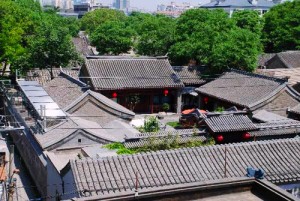 When it comes to the layout of a Chinese Quadrangle, a one-door courtyard can be changed into a two-door courtyard by building a wall to the south of the wing rooms in order to separate the back-seat rooms so that they are outside of the main yard. The gate on this new wall is called the second door. The three-door Chinese Quadrangle can be constructed by building another row of rooms (named backside rooms) behind the main rooms to form another independent yard. Backside rooms are usually used as bedrooms for young female members of the family because of their relative privacy. Both the two-door and three-door Chinese Quadrangle layouts have more living space available than the one door layout and are thus more suitable for a big family to live in.
When it comes to the layout of a Chinese Quadrangle, a one-door courtyard can be changed into a two-door courtyard by building a wall to the south of the wing rooms in order to separate the back-seat rooms so that they are outside of the main yard. The gate on this new wall is called the second door. The three-door Chinese Quadrangle can be constructed by building another row of rooms (named backside rooms) behind the main rooms to form another independent yard. Backside rooms are usually used as bedrooms for young female members of the family because of their relative privacy. Both the two-door and three-door Chinese Quadrangle layouts have more living space available than the one door layout and are thus more suitable for a big family to live in.
There is an open space in the centre of the courtyard where the paths are paved with black bricks, cobbles or slab stones that make it convenient and safer to go out on rainy days. Flowers and trees can be planted in the courtyard if it is spacious enough. The locals in Beijing City like having pomegranate trees, Chinese flowering crabapples and oleanders growing in their yards. In addition, they often have a big bowl in the centre of the courtyard that is used to keep goldfish, and the water in the bowl is also kept as a precaution against fire.
The front gate of a Chinese Quadrangle is usually painted black. There are also festoon gates2 and moon gates within the quadrangle that are used to separate the outer and inner yards. Generally speaking, the living room (the room for greeting newly arrived guests), the gatehouse, the garage and the stable are in the outer yard while the inner yard is used for private, daily life.
- Screen wall
A courtyard screen wall (called Zhao’bi in Chinese) is a shielding wall that is generally inside or sometimes outside the gate. Its function is to stop passersby from being able to see the inside of the courtyard when the entrance gate is open.
A screen wall can be made from carved tiles, stones, wood, adobe and other materials. Some screen walls are simply colored and decorated while others are intricately carved with patterns or words.
The festoon gate is the most magnificently-decorated door in the Quadrangle Courtyard, and its exterior eaves are usually lavishly painted with greens, reds, blues, whites and other colors, as well as having unique and exquisite floral designs known as festoons on them. There are two inverted, downward-facing pillars on either side of the festoon gate that are usually each carved and have colourful lotus flowers painted onto them.
Try the Quadrangle hotels on our travel: Hiking along the wild Great Wall.
The Ming Mausoleums
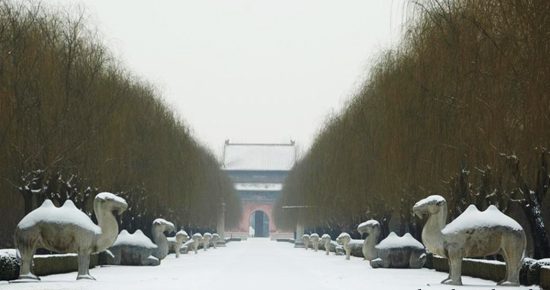
There are a total of 13 mausoleums for Emperors of the Ming Dynasty (1368-1644) here, so it is generally called the Thirteen Mausoleums. In fact, in the mausoleums you will find 13 emperors, 23 empresses, 2 princes, about 30 imperial concubines and even 1 palace eunuch, who were all cremated and placed in this group of tombs.
Shendao
“Shendao” in Chinese means “the way of the spirit” or “the sacred way”. It is 7 kilometres long, and stretches from the Memorial Arch through to the gate of the main tomb, Changling Mausoleum (the mausoleum of Emperor Yongle).
The Memorial Arch is made of white marble and was built in 1540. It has 5 arches supported by 6 pillars, each with beautiful bas-relief carvings of qilin (Chinese unicorns), lions, dragons, other unusual animals and lotus flowers pared into them.
After the Memorial Arch, you’ll find the Great Red Gate, which was built in 1426. About 457 metres away from the Great Red Gate, there stands the Tablet House. A marble column, known as a Mubiao, stands at each corner of the Tablet House. A Mubiao was an ornamental column which was erected in front of a tomb, much like a tombstone. A huge tablet, which is 6.5 metres high, stands in the middle of the Tablet House and rests on the back of a marble tortoise.
The most distinctive work of art in the mausoleums is known as the “avenue of stone animals and statues”. Avenues of stone animals and statues can often be found at the entrance to imperial mausoleums from the Han Dynasty (206 BD— 220 AD), but none of them are as famous as this one.
The avenue, which boasts 36 stone animals and statues, has two columns (called wangzhu in Chinese) on either side of the entrance. They are hexagonal, with a cloud design carved into them, and the top of them is shaped like a cylinder. The animals included in the avenue were specifically chosen because culturally they are all symbolic. There are lions, which were symbols of power. There are xiezhi, which were mythical feline beasts that were said to be able to distinguish right from wrong and thus were symbols of justice. There are camels, which were symbols of transportation, and elephants, which were symbols of peace. There are qilin, another mythical animal with a scaly body, a cow’s tail, deer’s hooves and a horn on its head, which were also symbols of peace. And finally there are horses, which were symbols of expedition. There are 24 stone animals in all. These beasts are followed by a group of 12 human statues (officials), which symbolize the funeral cortege of the deceased emperors.
Dingling Mausoleum
Dingling Mausoleum is the only one of the Ming mausoleums that has been excavated so far. The excavation lasted more than two years and took place from 1956 to 1958.
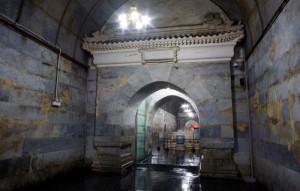 It is the mausoleum of the Emperor Wanli (1563-1620) and his two wives – Empress Xiaoduan and Empress Xiaojing. Empress Xiaoduan died only a few months before his death. Empress Xiaojing died in 1612, eight years before the emperor’s death, and was buried in a nearby tomb reserved for imperial concubines. Since Xiaojing did not hold the title of Empress at the time of her death, she wasn’t initially permitted the privilege of sharing the emperor’s tomb.
It is the mausoleum of the Emperor Wanli (1563-1620) and his two wives – Empress Xiaoduan and Empress Xiaojing. Empress Xiaoduan died only a few months before his death. Empress Xiaojing died in 1612, eight years before the emperor’s death, and was buried in a nearby tomb reserved for imperial concubines. Since Xiaojing did not hold the title of Empress at the time of her death, she wasn’t initially permitted the privilege of sharing the emperor’s tomb.
Xiaoduan never bore the Emperor a son, whilst Xiaojing gave birth to one son, who then became the emperor after Wanli’s death. Although Xiaojing’s son was only emperor for 29 days, he left the throne to his son. When Xiaojing’s grandson ascended to the throne and became the emperor, he promoted his grandmother to the rank of queen dowager and it was decided that her body should be moved into the imperial mausoleum.
The construction of the mausoleum started in 1584, when Emperor Wanli was only 22 years old. The mausoleum was finished when he was 28, and he had to wait another 30 years to finally use it.
When the Ming Dynasty collapsed in 1644, the tomb was damaged in a peasant uprising led by Li Zicheng and was not restored until the reign of the Qing Emperor Qianlong (1736-1795).
The underground palace is 27 metres below ground level and has a total surface area of 1,195 square metres. It is divided into 5 chambers – the antechamber, the middle chamber, the rear chamber and the left and right annex chambers. The vaulted chambers are built of stone, without employing a single beam or column. The antechamber and central chamber form a long passageway, at the end of which is the rear chamber, with the two annex chambers set at right angles to it forming a T-shape.
Peking Opera
Peking Opera is the most popular and influential type of stage performance in China. It is named Peking (Beijing) Opera because it emerged and became popular in Beijing. However, it was originally adapted from a style of opera known as Hui Opera.
The History of Peking Opera:
In 1970, the Qing Emperor Qianlong (1736-1795) celebrated his 80th birthday. He summoned opera troupes from all over China to entertain him on this special occasion. Four famous troupes from the Huizhou district (in what is now Anhui province) remained in Beijing after his birthday performance. The vigorous tunes and crystal clear notes associated with Hui Opera gradually made it more popular and it eventually replaced Kunqu Opera, which had once been popular in the palace and among the upper class citizens of Beijing. In 1828, a troupe from Hubei came to Beijing and often performed with these troupes from Anhui. Their two different styles of opera eventually blended together and gradually created a whole new genre, which came to be known as Peking Opera.
In the early 20th century, Peking Opera enjoyed its period of greatest success. Millions of people flocked to the opera house every year. In fact, Mei Lanfang (1894-1961) is still regarded as the most famous Peking Opera performer in Chinese history.
Key Features of Peking Opera:
The variations of rhythm and pitch in Peking Opera’s singing enable the performer to express their thoughts and emotions clearly. The dialogue in the opera is either in standard spoken Chinese, or in a special dialect used only in music. Both styles of dialogue are now not easy to follow for anyone who is not familiar with this style of opera.
The archetypal characters in Peking Opera are finely differentiated according to disposition and age. Female characters are called dan, male characters are sheng, clowns are chou, and cruel or sinister characters are jing or hualian. These differing types of characters are all distinguished using different face make-up. Audiences know what kind of character is being portrayed from the colours on the actor’s face. For instance, the colour red represents loyalty and courage, yellow signifies fierceness, white is used to represent villainy and black symbolises honesty and straightforwardness.
String and wind instruments are used in the musical accompaniment to a Peking Opera. Percussion instruments, such as gongs, drums and castanets made of padauk wood or bamboo, are also necessary for the performance. The most important string instrument is called the jinghu, which is closely followed by the erhu. Plucked string instruments like the yueqin are also important.
Beihai Park (the Winter Palace)
Located in the centre of Beijing, Beihai Park is adjacent to the Forbidden City in the west, and to Coal Hill Park in the east. It connects the Central Lake and the South Lake, and borders Shichahai Lake in the north. Beihai Park has the longest history among the Chinese imperial parks. Its history also ties in with the history of Beijing’s development as a city.
In 938, under its original name “White Lotus Pool”, Beihai Park though it was not an official palace, was occupied by its first imperial resident, Emperor Tai of the Liao Dynasty (907-1125). During this time it was renamed Yaoyu Palace. After the Liao Dynasty ended, the Jin Dynasty (1115-1234) took over and chose Beijing (named Zhongdu then) as its capital, extending and expanding the whole city in the process. Yaoyu Palace was also renovated and the Hall of Jade was added.
From 1163 to 1179 the emperor Shizong of the Jin dynasty used the clay from the lake to make a small island in the centre of the lake, which he named Jade Island (Qionghua Island). With the centre of Jade Island, he extended the palace and renamed it Daning Palace. The Palace in the Moon (Daning Palace) was built on top of this island. During the Yuan Dynasty (1271-1368), the whole palace area was repaired three times. The Palace in the Moon was extended and made into a large, luxury palace, and this was where Kublai Khan (one of the emperors of the Yuan Dynasty) used to live. Many other buildings were also built on top of the hill (named Longevity Hill then) on Jade Island. Unfortunately, this fabulous palace collapsed in 1579, during the Ming Dynasty. Now the Temple of Eternal Peace sits on the former site of this palace. During the Ming Dynasty even more restoration and construction was done in Beihai Park. The Five Dragon Pavilions and galleries were built during that period. However, the whole palace was badly damaged during the war, towards the end of the Ming Dynasty.
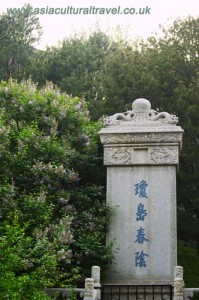 The Emperor Qianlong of the Qing dynasty (1644-1911) revelled in building gardens. So for 44 years, from 1742 right through till 1786, he oversaw the construction of a monumental project. The project included 126 halls, numerous arches over gateways and temples, 35 pavilions, 25 bridges, 16 stone tablets, and renovations and reconstructions of 12 existing buildings on the shore of the lake. Then came the arrival of one of the most famous women in Chinese history – the queen dowager Cixi. She took a lot of money that was supposed to be allocated to the army and used it to renovate the palace. She even built a 1,510.4 metre long railway, which started at the Tower of Vermilion Light (in the Middle Sea) and ended at the Clear Mirror Study (the Heart – Ease Study) in Beihai Park. During the Qing Dynasty, Beihai Park was regarded as a place of recreation for the imperial family, and was known thereafter as the Winter Palace.
The Emperor Qianlong of the Qing dynasty (1644-1911) revelled in building gardens. So for 44 years, from 1742 right through till 1786, he oversaw the construction of a monumental project. The project included 126 halls, numerous arches over gateways and temples, 35 pavilions, 25 bridges, 16 stone tablets, and renovations and reconstructions of 12 existing buildings on the shore of the lake. Then came the arrival of one of the most famous women in Chinese history – the queen dowager Cixi. She took a lot of money that was supposed to be allocated to the army and used it to renovate the palace. She even built a 1,510.4 metre long railway, which started at the Tower of Vermilion Light (in the Middle Sea) and ended at the Clear Mirror Study (the Heart – Ease Study) in Beihai Park. During the Qing Dynasty, Beihai Park was regarded as a place of recreation for the imperial family, and was known thereafter as the Winter Palace.
The White Dagoba
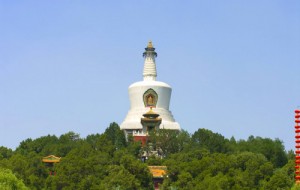 At the top of Jade Island sits the White Dagoba, which is a Tantric Buddhist monument built in honour of the Dalai Lama. The Emperor Shunzhi of the Qing Dynasty adopted a Tibetan Lama priest named Momhan, and it was Momhan who persuaded him to build the White Dagoba and also the White Temple in 1651. In 1743, when Qianlong was the emperor, the White Temple was renamed the Temple of Eternal Peace.
At the top of Jade Island sits the White Dagoba, which is a Tantric Buddhist monument built in honour of the Dalai Lama. The Emperor Shunzhi of the Qing Dynasty adopted a Tibetan Lama priest named Momhan, and it was Momhan who persuaded him to build the White Dagoba and also the White Temple in 1651. In 1743, when Qianlong was the emperor, the White Temple was renamed the Temple of Eternal Peace.
The White Dagoba is 35.9 metres tall, and was built using bricks and stones that were whitened in lime. There is purposefully no entrance to the White Dagoba. It is said that a red emblem on the surface of the building marks the opening, which was sealed after some sacred articles were stored inside. It is also said that there is a small box painted with a symbol of Taiji hidden inside the dagoba, and it is rumoured that this box contains two Buddhist relics.
The Dagoba rests on a square base constructed from huge stone slabs, and it is topped with two bronze parasols. 16 bronze bells hang around these parasols, and each of them weighs about 8 kilogrammes.
What is the difference between a dagoba and a pagoda?
A dagoba is a multi-storeyed Buddhist temple or sacred paramedic tower, which usually has an odd number of storeys and which is usually built over a sacred relic or as a work of devotion. A pagoda, on the other hand, is a single rounded structure crowned by a golden spire.
The Round City
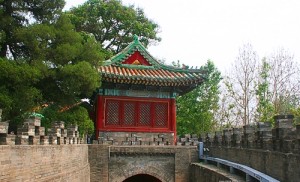 The Round City was built during the Jin Dynasty (1115-1234), and was famous for being a city within the city. It stands at the south gate of Beihai Park. It is surrounded by a 4.6-metre-high circular wall and has a distinctive courtyard with halls, pavilions and ancient trees. It was originally an islet in the Pool of Great Secretion (Taiyechi). It was formed from the lake excavations and served as an imperial garden. There are two gates leading into the Round City – the Clear View Gate (Zhaojingmen) to the east and the Extended Auspiciousness Gate (Yanxiangmen) to the west.
The Round City was built during the Jin Dynasty (1115-1234), and was famous for being a city within the city. It stands at the south gate of Beihai Park. It is surrounded by a 4.6-metre-high circular wall and has a distinctive courtyard with halls, pavilions and ancient trees. It was originally an islet in the Pool of Great Secretion (Taiyechi). It was formed from the lake excavations and served as an imperial garden. There are two gates leading into the Round City – the Clear View Gate (Zhaojingmen) to the east and the Extended Auspiciousness Gate (Yanxiangmen) to the west.
The building of most significance in the Round City is the Hall to Receive Light (Chengguangdian), which was built during the Yuan Dynasty (1279-1368) and renovated once during the Ming Dynasty and once during the Qing Dynasty respectively. In the middle of the Round City is the 13 square-metre Jade Jar Pavilion, which has a blue roof and white columns.
Other important attractions in Beijing Park include:
The Temple of Eternal Peace (Yong’an Temple)
The Imperial Court Restaurant
The Temple of the God of Agriculture
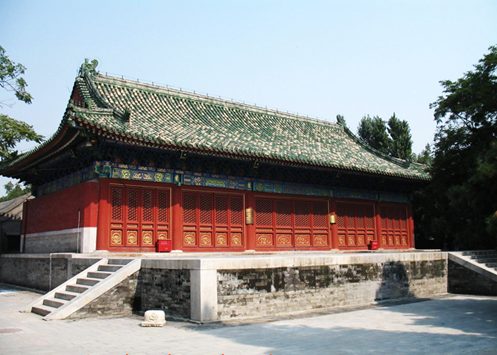 The Temple of the God (Creator) of Agriculture was the site of imperial sacrifices dedicated to the cult of Shennong, the Holy Farmer. It is located in the southern part of the city, directly to the west of the Temple of Heaven, and occupies a total area of three-square kilometres.
The Temple of the God (Creator) of Agriculture was the site of imperial sacrifices dedicated to the cult of Shennong, the Holy Farmer. It is located in the southern part of the city, directly to the west of the Temple of Heaven, and occupies a total area of three-square kilometres.
According to ancient Chinese legend, there were three wise kings, referred to as Fu Xi, Shennong and Suiren. Fu Xi was the ruler of greatest antiquity, credited with the invention of hunting and fishing and the domestication of animals; Shennong was the second ruler and he was supposed to have invented the plough and discovered the curative properties of certain plants. Suiren was the third legendary ruler and he supposedly discovered fire.
According to the rites of the Qing Dynasty (1644-1911), on the day of the Vernal Equinox, as fixed by the lunar calendar, the emperor would come to this altar to make a sacrifice to the sacred tablet of Shennong. Following this ceremony, the emperor would plough several furrows of land with his own hands. These would be the first furrows ploughed in that year. Then the emperor would go back to the observation platform to watch the princes, ministers and a representative group of ordinary people finish the task.
